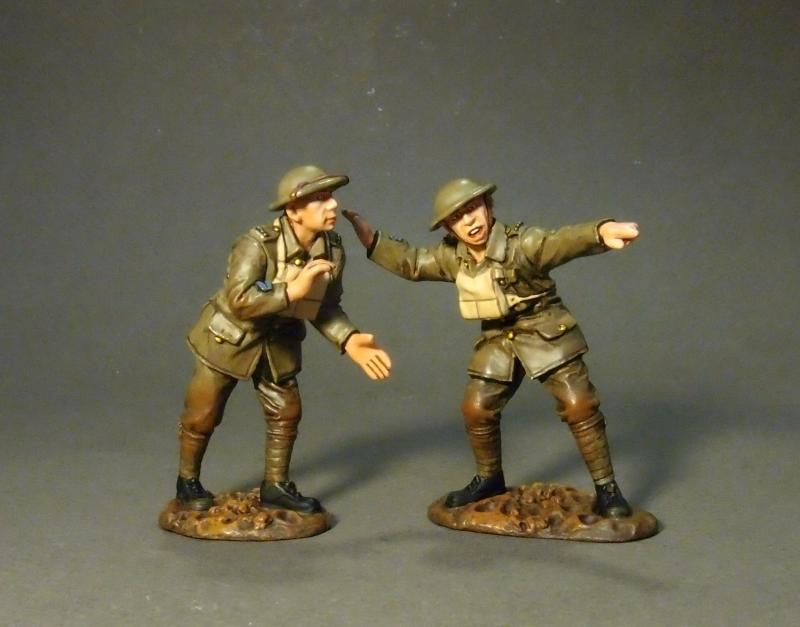Two Crew Aiming Gun, The Royal Garrison Artillery, Battle of Amiens, 6th August 1918--two figures--RETIRED--LAST ONE!!
Regular Price: $78.00
Sale: $40.00
Item Number: GWB-33
Two Crew Aiming Gun, The Royal Garrison Artillery, Battle of Amiens, 6th August 1918—two figures
The Royal Garrison Artillery (RGA) was an arm of the Royal Artillery that was originally tasked with manning the guns of the British Empire's forts and fortresses, including coastal artillery batteries, the heavy gun batteries attached to each infantry division, and the guns of the siege artillery.
In the quagmire of trench warfare, it was finally realised that it was not the place for the artillery to be in the infantry line.
Henceforth, the artillery would be positioned well behind the infantry battle line, firing at unseen targets, at co-ordinates on a map calculated with geometry and mathematics. As the war developed, the heavy artillery and the techniques of long-range artillery were massively developed. The RGA was often supported by the Royal Flying Corps (RFC) who had devised a system where pilots could use wireless telegraphy to help the artillery hit specific targets.
From 1914, the RGA grew into a very large component of the British forces on the battlefield, being armed with heavy, large-calibre guns and howitzers that were positioned some way behind the front line and had immense destructive power. The corps name was discontinued in 1924, when the RGA was re-amalgamated into the Royal Artillery
Ammunition supply to the Royal Field Artillery (RFA) and other field artillery units was normally the role of the Royal Artillery: that part of the Royal Regiment of Artillery which retained the Royal Artillery (RA) shoulder badges. However, during the war, the RGA, which had large numbers of men idling in fortified batteries around the World with little chance of seeing action, provided a draft of sub-units to the Western Front to assist with ammunition supply in the field, and the operation of supply dumps.
Official gun drill allocated certain tasks to each of the members of a gun detachment. In action on the Western front, detachments were frequently under strength because of casualties or because men were being withdrawn to the rear for a rest.
CREW DUTIES OF A 6-INCH HOWITZER DETACHMENT:
NUMBER 1: Commands the “gun”. Selects the ground for the gun platform. Lays for elevation and passes angle for dial sight and deflection to No.4. Supervises ramming and gives order to fire. Fits and removes rocking bar sight with No.4.
NUMBER 4: Lays (aims) the gun, with No 1. Removes and replaces sight cover. Assists No.1 fitting rocking bar sight. Clamps dial sight, fits clinometer. Directs No.6 planting night-firing picket and aiming posts.
RETIRED.
LAST ONE!!
